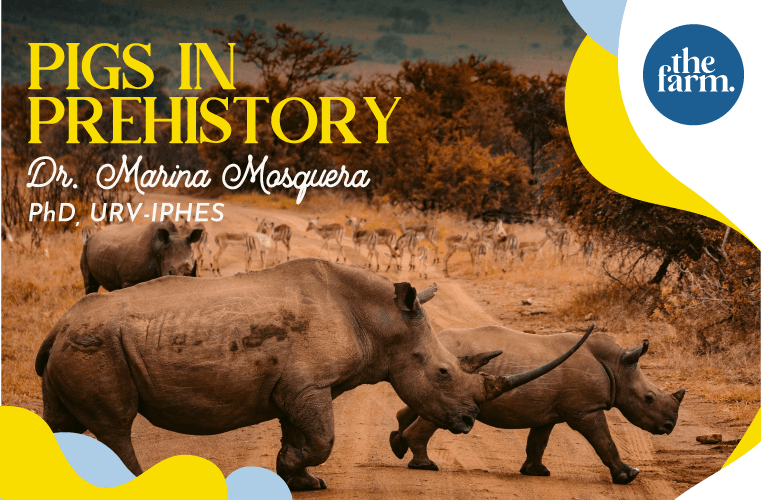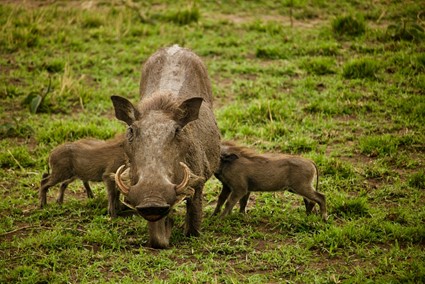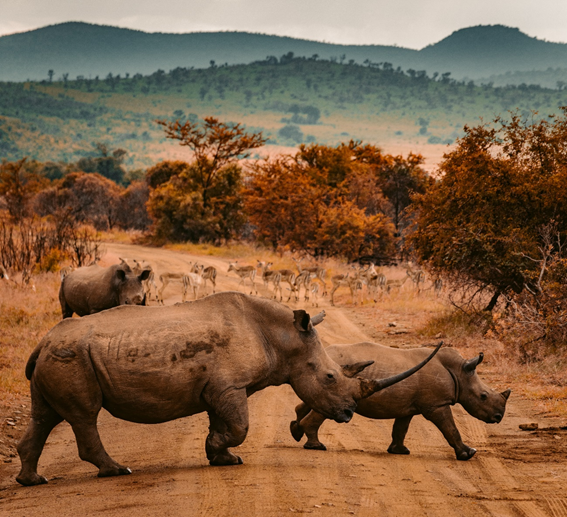
PIGS IN PREHISTORY
(Marina Mosquera, PhD, URV-IPHES) for The Farm Revolution
Pigs are included in the superorder Ungulata (this is, they walk on the tip of their toes, that are normally lined with hooves), the order Artiodactyla (they have an even number of fingers, and they bear weight on two at least), the family Suidae, the genus Sus and the species scrofa. The Word “pig” entails that they pertain to the domestic group, and therefore their morphology and body, skeletal, jaw and teeth size are different from their wild relatives: wild boars. Therefore, their complete name would be Sus scrofa domesticus. In turn, the term for “wild boar” in Spanish (jabalí) derives from the Arabic “ǧabalī”, that means “mountainous”.
Wild boars have many distinctive features. The first one is that their canine teeth grow continuously, during all the animal’s life. This feature is called hypsodonty. Thus, the greater the size of the canine teeth, the older the individual. This biological phenomenon is normal in herbivores because their diet wears their dentition away since plants contain silica particles in their structure. But hypsodonty is not common in omnivore mammals such as wild boars. The other distinctive trait is that it seems that they are one of the only four mammal species that have suffered a genetic mutation that protects them from the venom of snakes. The other three are hedgehogs, mongooses and honey badgers.

The numbers of Suidae in Europe were very low some 2 million years (MY) ago in some paleontological sites such as Fonelas (Granada). Naturally, we are talking about wild Suidae with morphological traits that are much more primitive than those of the current Suidae. According to research, there is a gap in the findings of these animals in the paleontological and archaeological records that lasted some 600,000 years (between 1.8 and 1.2 MY ago), until they appeared again in the Elephant Pit (Atapuerca, Burgos) site. It seems that the genus and species Sus scrofa, as we know it today, has been identified in Europe starting 1 MY ago.
Since then, bone remains of the genus Sus have been retrieved from several European sites, this meaning that in that period its presence becomes generalised in all the subcontinent. When Suidae are in an ecosystem, they are normally very abundant among the large mammals’ community. The classification as a small, medium or large mammal depends on the kind of animals found in a habitat. For example, in an environment in which there are no horses nor deer, probably wild boars (that normally weigh between 50 and 150 kilos) should be considered large mammals. On the other hand, in environments in which there are elephants, rhinos, horses, deer and other large animals, wild boars would be medium mammals, as in the case of the Iberian Peninsula 400,000 years ago.
Suidae are very plentiful because they are omnivorous and because they have a very successful reproductive strategy: to their short gestation period we must add their large number of offspring. Both traits afford them a great ability for the colonisation of new and different territories and habitats; and at the same time, this ubiquity and abundance has facilitated that their remains have been preserved in the archaeological and paleontological sites.
Nevertheless, and in spite of their great resilience, Suidae do not tolerate extremely low temperatures, this suggesting that their colonisation of Europe was probably carried out during relatively mild-weathered geological periods, just like it happened some 1 MY ago. In fact, wild boars live in North Africa, Asia and in the whole of Europe, except in Scandinavia. Also, it was us humans who introduced these animals in North America and New Zealand.
As we have said, wild boars have been found in many prehistoric sites starting 700,000 years ago. Together with rhinos, horses, bison and deer hunted by the different hominid species that have populated Eurasia and North Africa, Suidae have been part of the human diet since hundreds of thousands of years. However, there is the peculiarity that, until relatively recently, this is, dating back some 15,000 years, Suidae never were the target of a special attention for the ancient prehistoric human groups of hunters-gatherers. This is, they appear in the records of the excavations of the archaeological sites, but in very few numbers. This means that these animals never were the target of a special attention by the human communities until relatively recently. For instance, in none of the Atapuerca range sites, that contain one and a half million years of history of our genus, Suidae have been frequent animals, but truly residual.

Nevertheless, some 30,000 years ago, the south European Neanderthals started to look at wild boars, possibly conditioned by the incipient recession of the megafauna (such as elephants, rhinos and bison) and the increase in the numbers of large, medium and even small animals, represented by horses, deer, wild boar, goats and rabbits. Thus, in the Gibraltarian site of Gorham’s Cave, fireplaces, stone instruments and remains of wild boars, rabbits, dolphins, birds, tortoises, fish and pine nuts consumed by the Neanderthals that used the cave were retrieved.
Nevertheless, the real prominence of Suidae is not in the Pleistocene, but in the Holocene, an era dating back 10,000 years. The Holocene started with an important warming that caused the extinction of the large terrestrial animals in a great part of the continents, and therefore the smaller animals replaced these large animals in most of the planet.
Very interesting archaeological excavations that have been carried out in the Jömon culture (Japanese hunters-gatherers that lived between 16,000 and 2,400 years ago) have shown numerous burials of dogs, this showing that dogs (possibly domesticated 20,000 years ago) already played an essential role in hunting, and therefore they were honoured with special funeral rites. But besides burials, the archaeologists found that the hunters-gatherers had represented in clay figures of dogs cornering wild boars. In this way, the archaeologists have come to the conclusion that dogs were a real hunting technology, just as they are nowadays, for cornering o guiding the hunters towards aggressive animals that were very quick when they fled, such as wild boars.
It is curious how this animal reached a special relevance in some areas, as for instance in the Zagros Mountains (Iran and Iraq), were a human settlement has been found showing evidence of ritual gastronomic practices associated with wild boars. It is the Asian site, dating back some 9,500 years, where a pit was dug in which 19 wild boar skulls perfectly arranged and sealed were found. Many of the skulls had had their canine teeth removed, probably as a trophy.
But it is not until their domestication that Suidae become really prominent. As in any domestication process, it probably did not happen suddenly, but after a long handling and management process of the wild herds in surroundings controlled by humans. It is possible that this management started with the feeding with collected products especially interesting for wild boars in specific areas of the territory, and therefore in the long term the animals became accustomed to the human presence.
This phenomenon seems to have taken place approximately 9,000-10,000 years ago, in the Neolithic, in two distant areas in the planet: Anatolia (part of Turkey, currently) and central China. And after their domestication, pigs accompanied the first Neolithic stockbreeders and farmers in their expansion through Europe and Asia.
Don’t miss the rest of our articles.
